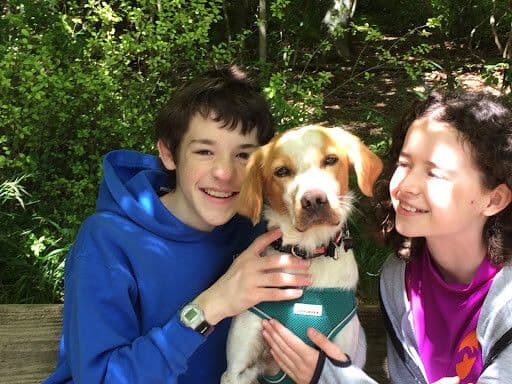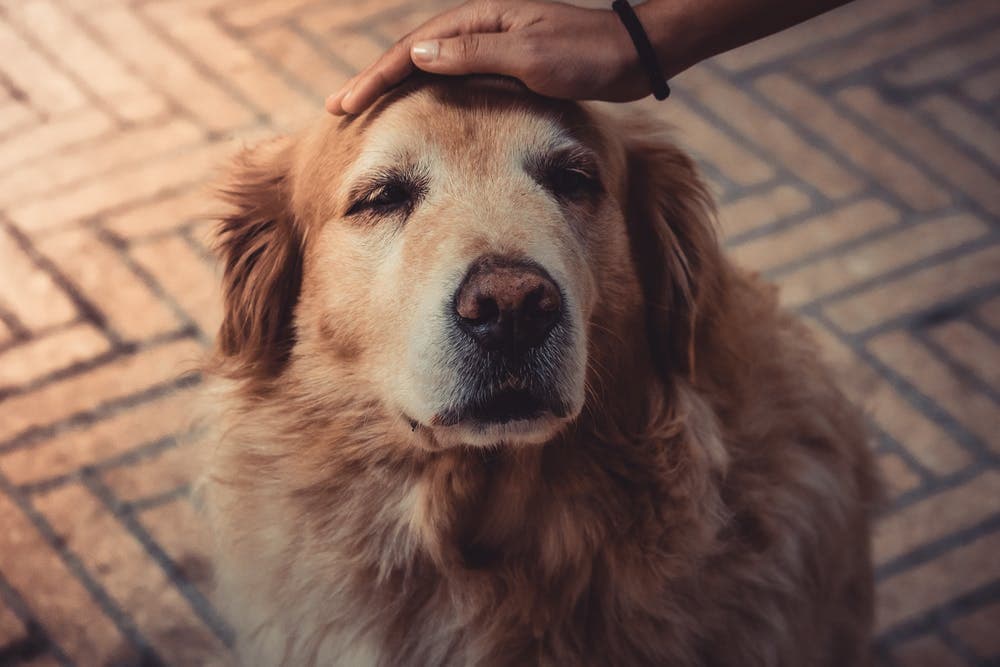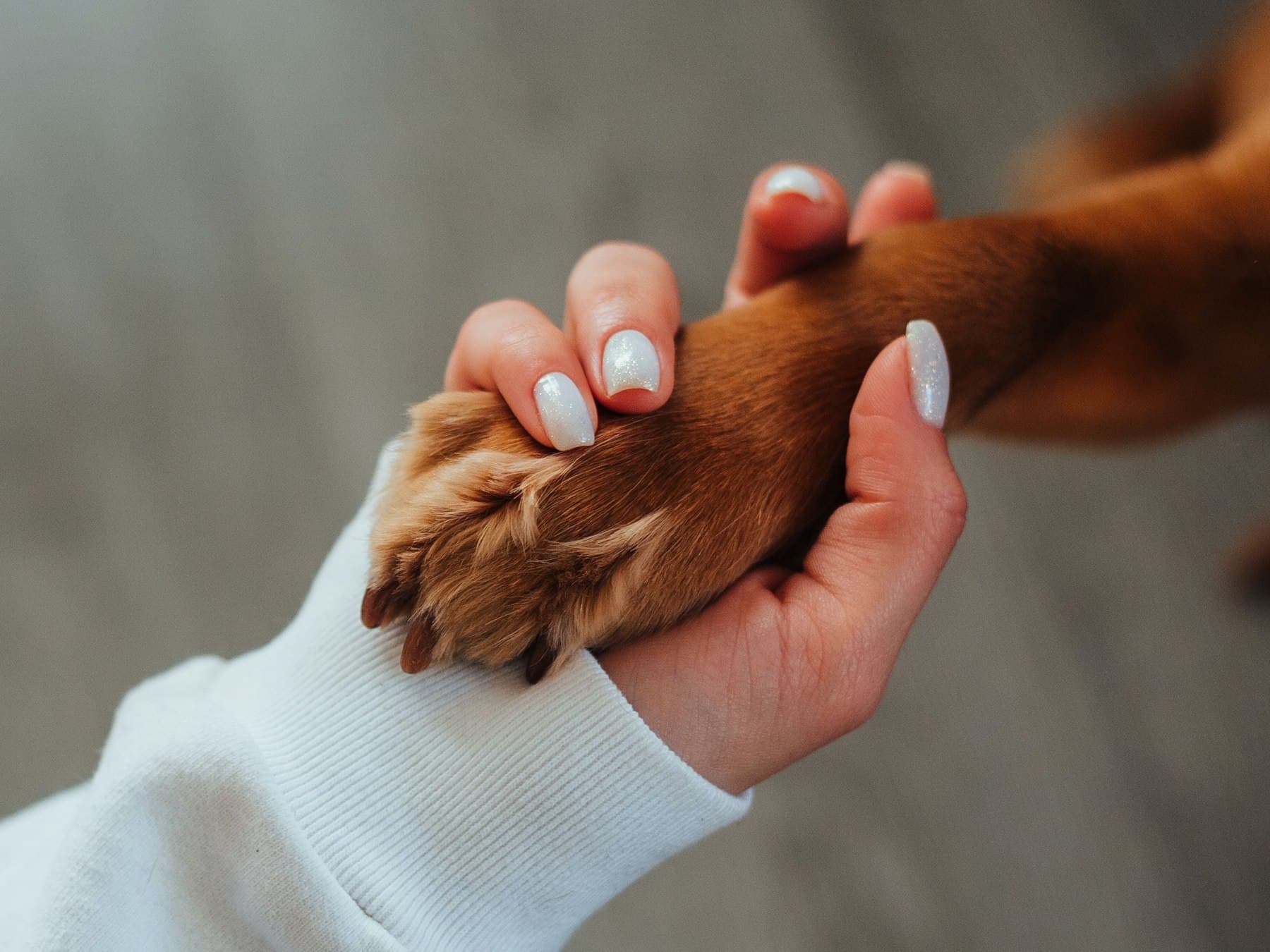
How can I help my nervous dog at the vet? Why is my dog anxious at the vet? How can I prepare my dog for a stress free vet visit? Kathy from Dog First Aid Sussex answers your questions in her latest blog.
This is often a worrying occasion, whether the visit is routine or not. If you have a dog that is anxious about going to the vet then you will probably also become anxious yourself. Your anxiety can then feed the dog’s anxiety and you can easily end up in a vicious cycle. Even if you are able to stay calm, an anxious dog can be difficult to manage, potentially even dangerous.
If you can work out the reason for your dog’s anxiety that might help. Have they had a bad experience at the vet? Many dogs (including my own) were fine at the vet until Covid. If they had an accident/illness during this period and had to spend time with the vet without you being able to stay with them (and the staff looked different with their facemasks on), then it’s hardly surprising that they now associate the veterinary surgery with unpleasantness.
Perhaps they have had a serious or long-term issue that has required many visits and painful experiences. Perhaps another dog snapped at them while waiting for their appointment. Perhaps it’s the smells, the noises, the general unfamiliarity.
Here’s a few ideas of things you can do to help. It will depend on the basis for the anxiety, so pick the ones which feel relevant to you and your dog:
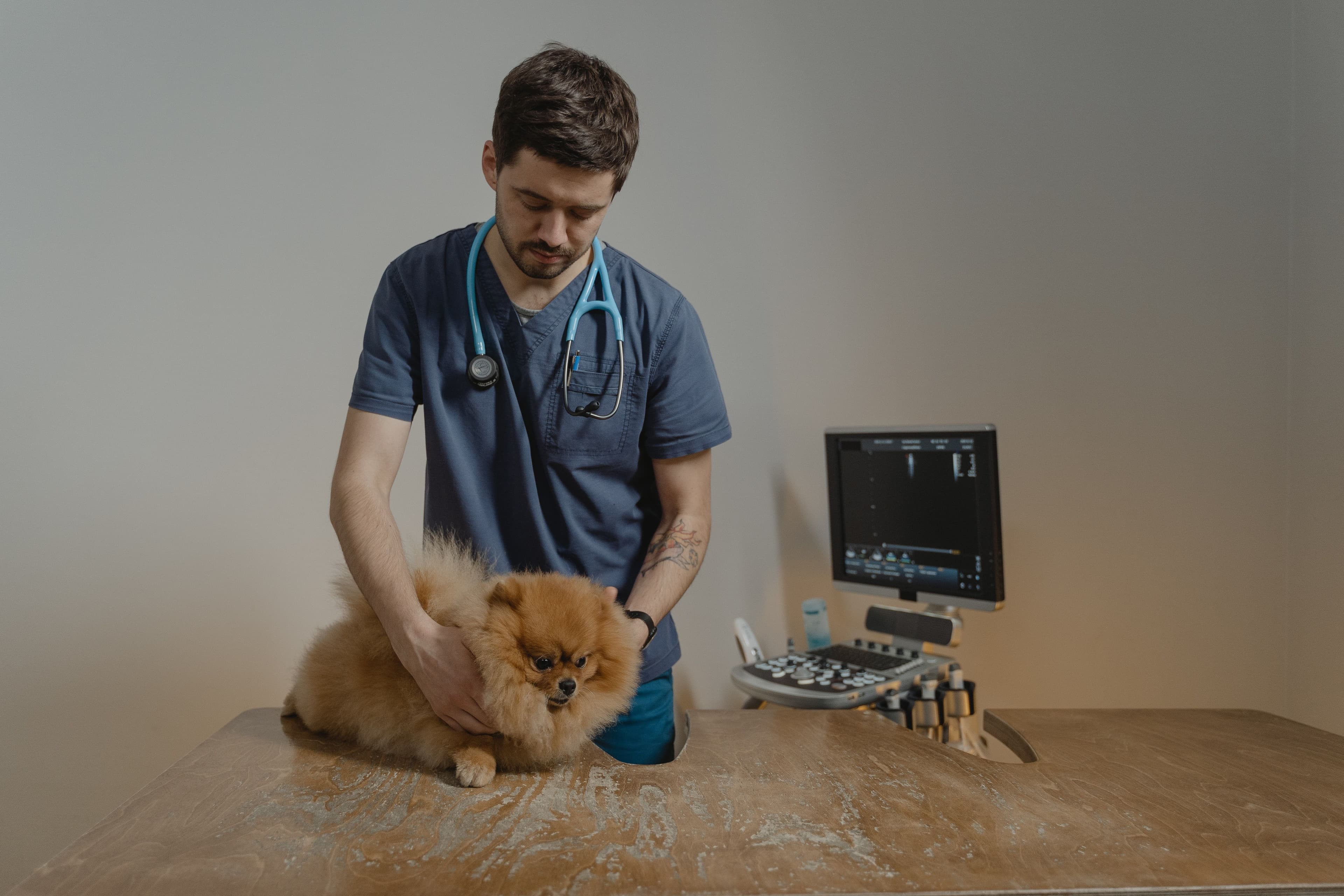
First things first – Safety. If you are concerned that you or the vet may get bitten due to the stress level of your dog then they should be muzzled or sedated. The vet will advise on this.
It could be useful to muzzle train your dog, so that the act of muzzling them isn’t in itself stressful for them. You want the dog to be relaxed and comfortable wearing a muzzle for short periods. You can get advice from a recommended trainer/behaviourist if you need to.
Be as calm and relaxed yourself as you can.
Don’t tell your dog off for his negative behaviour. He can’t help it and it will make his anxiety worse.
Practice examining your dog at home. Most people regularly check their dog’s ears and paws, but examine them all over in a similar way to what vets do. Lift the tail gently, feel their tummy, open their mouth, and so on. Again, you may need some advice on how to approach this if your dog is unhappy about any aspect of it. Doing some desensitising work at home can really help in the long term. We dedicate a significant portion of our workshops discussing how to examine your dog and what kind of things to be looking for, because it’s
very important in helping to prevent emergencies, spotting symptoms early, being prepared for any emergency, as well as practicing for vet’s visits.
Veterinary surgeries should be happy for you to make social visits. It can reduce/remove the negative association for a dog if they don’t only visit when they’re unwell or when the vet
does ‘horrible’ things to them. Visit regularly just to say hello and have a few treats. If your dog is very anxious you may have to build this up gradually. Start by just going to the car
park and then home again. Stop before your dog gets too anxious, give them some treats and leave it at that. Hopefully you’ll be able to build up to going in the door, up to the
receptionist, maybe even sitting down for a few minutes without your dog showing anxiety.
If you’re having trouble getting your dog into the building it may be possible for the vet to come to you in the car park, especially if it’s only a routine check-up.
If it’s only a routine check-up or something simple then you may be able to make an online appointment.
When you make the appointment speak to the receptionist about your concerns. For example, if your dog is more anxious when there are other animals with them in the waiting
room, you will probably be able to wait outside in your car. The receptionist may be able to make an appointment for a quiet time, perhaps the last appointment of the day.
Try teaching your dog cue words for different parts of their body. This way you/the vet can say ‘ear’ (for example) before you look at the ear. This way the dog will know what to expect
and not get any unpleasant surprises.
Tag along with a doggy friend who’s calm and confident at the vet.
Let your dog take a favourite toy or blanket with them. If they have something that will distract or soothe them then try it, as long as it’s not something that could be a problem for
other dogs there such as a squeaky toy.
Exercise the dog before the vet visit. This will help them to be more relaxed and less likely to be over-excited.
Skip a meal before the vet visit. The dog will be less likely to be car sick or have a toilet accident.
Ask your vet for advice. They will see anxious dogs regularly and may well have some tips of their own.
Try going to a different vet.
Always reward the behaviour that you want to see again, i.e. being calm and co-operative. Give them treats. Avoid pushing them beyond what they’re comfortable with.
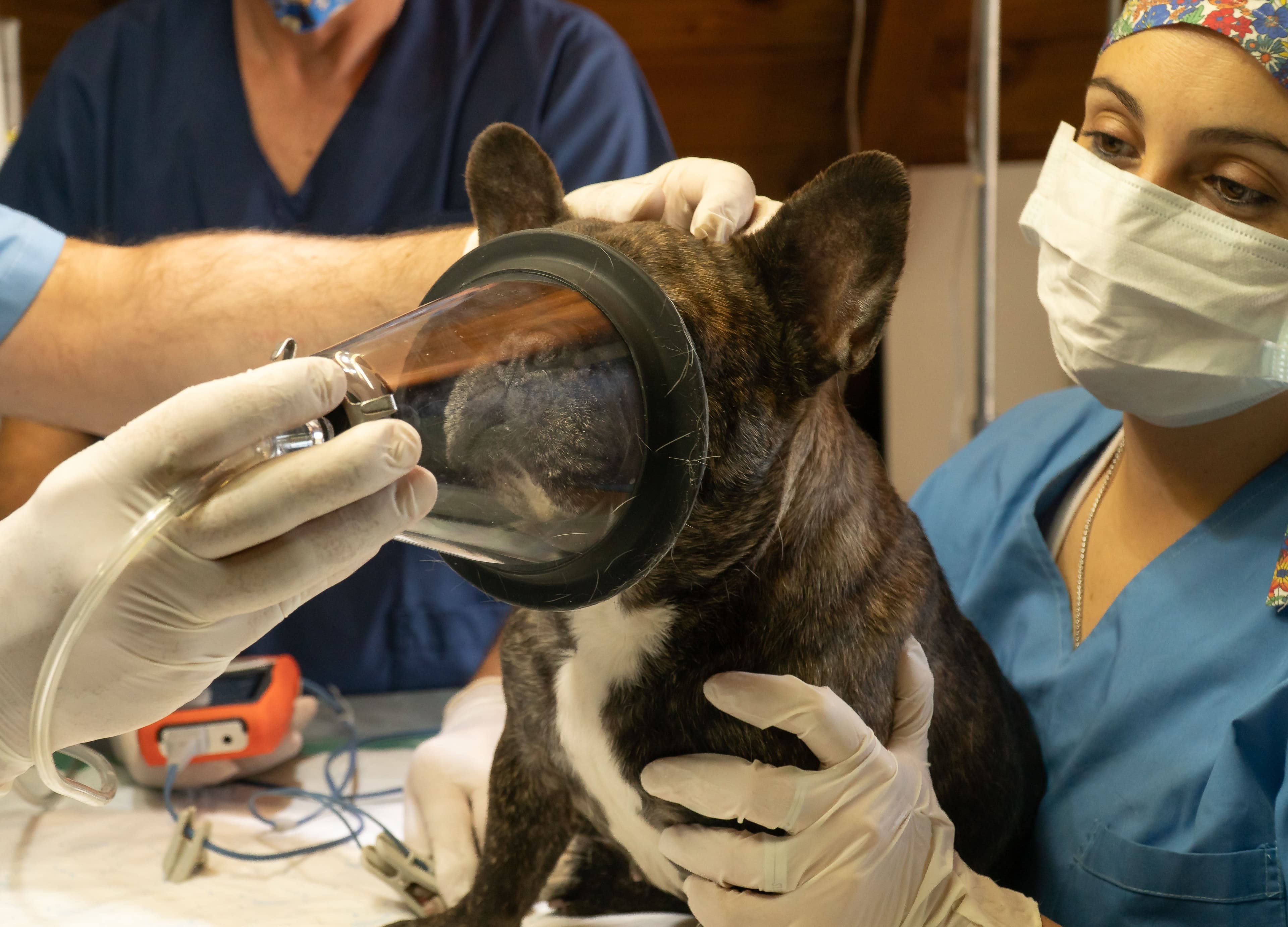
If you are in the unfortunate situation of having to visit the vet in an emergency, then this will be inherently stressful. I thoroughly recommend taking a dog first aid course (obviously I do!) or, if you have already done one, re-read your notes regularly so your knowledge stays fresh and up to date.
This way you will feel calmer and more confident in an emergency. The less stressed you are, the less stressed your dog will be, and this will make a lot of difference in how the dog experiences the situation and help avoid any future negative associations.
